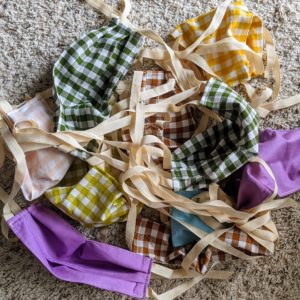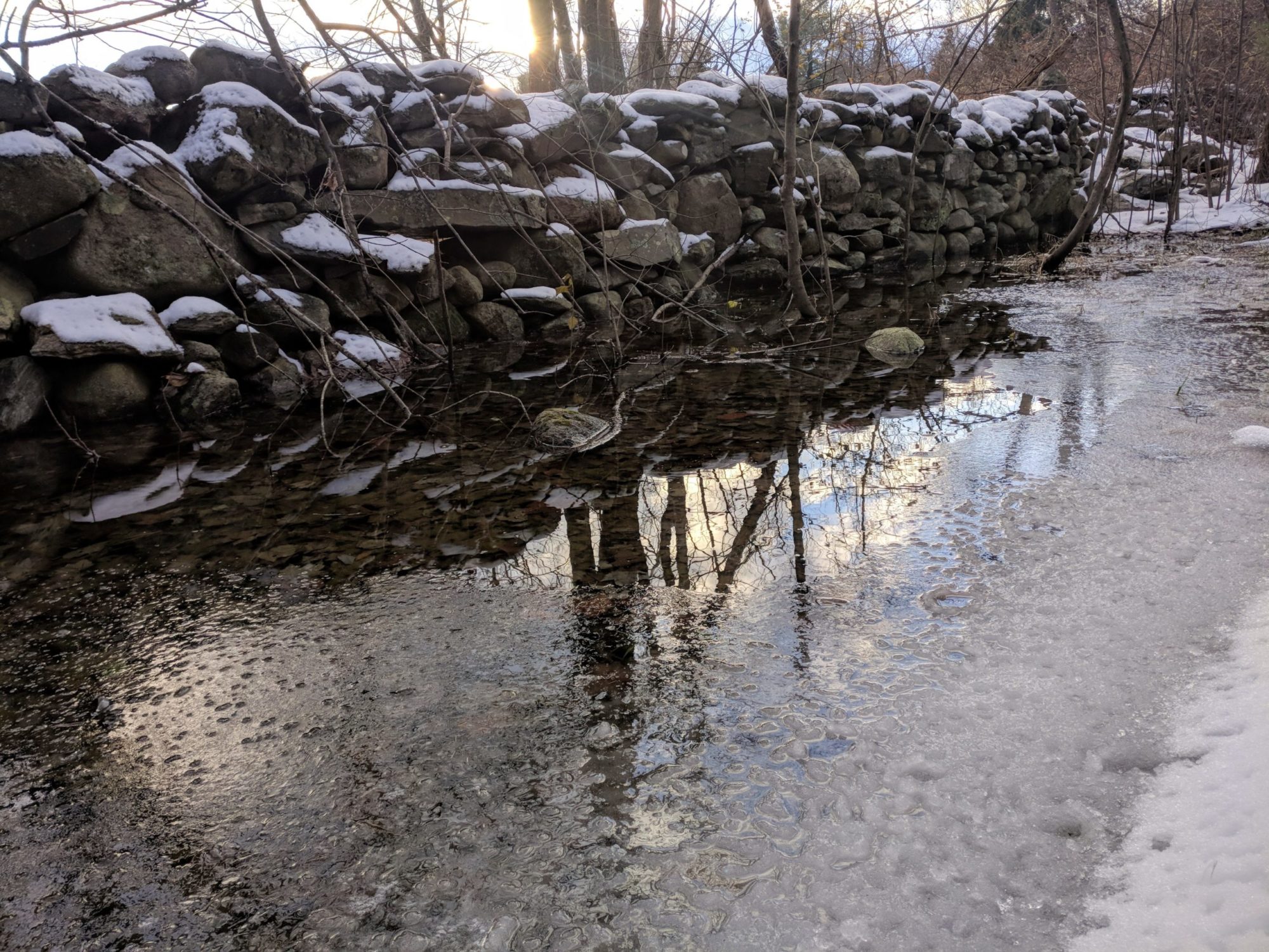I’ve just started making masks for local groups. I got into it through a Facebook group. I first joined NextDoor, because, what with the Covid-19 crisis, I felt I should be more in touch with the local community. The NextDoor group linked me to It Takes A Village: COVID19 Danbury Outreach. That group linked me to Tri-State Mask-Making. I joined Tri-State Mask-Making and lurked. I made a mask for myself out of an Ikea curtain.
After a while, I felt like I should make masks for other people. There’s a fair amount of social pressure to help other people. So, I ordered fabric and waited for it to arrive. It came last week.
I also signed up with a web form on the Sew For Ny website. I was contacted by a coordinator who was very eager to get any masks I had. Michelle, my wrangler/coordinator pinged my Friday to see how many masks I had (none, but I could try for 30 by Sunday). It seems like fulfilling needs is a fast-paced, stressful business. Eventually, it was decided my 22 masks would go to the local Federal Peniteniary. They were goiing to be picked up Monday, then Michelle asked if she could pick them up Sunday night. A lady that works at the penitieary is picking them up from Michelle Monday at 5:30 in the morning. She’s really, really, in-tears happy that the mask-making group has almost 100 masks for them.

Overview of mask-making process
Fabric arrives via mail. I get the mail and either wait 3 days for any virus on the outside of the package to die, or I lysol the package and open right away. I put the fabric in a delicates bag and launder it on “OMG Hot” so it shrinks as much as it is going to.
Once the fabric is washed, I iron it. I fold it in half, so that it is about 10″ x 17″ (it’ll have shrunk in the wash). I trim off all the loose threads from washing. I iron it into a rectangle.
I do this for all the fabric from the laundry. Once I have a collection of folded, ironed rectangles, I cut a strip off the edge so that the rectangles are about 10″x15″. I save the long strip for making ties, when I run out of twill tape. Then I cut along the folded edge.
I take this collection of roughly 10″x15 rectangles, and I fold the short edges down, iron, the fold them again and iron. This hides the raw seam. I then fold the rectangle roughly into thirds, with the hemmed edges overlapping, and the smooth side of the hem inside. I iron this fold in.
Once the whole stack is ironed this way, I take it to my sewing machine. I sew the hems in. Then I put the ties into the fold… really, I’m just following the Korean 3d pattern. I don’t need to go into this all.
After I have a set of masks, I wash them again on hot, with unscented laundry detergent. Then I dry them, also on hot. I put on my own mask and gloves to take them out (all wrinkly!) , then put them in a Trader Joe’s brown paper bag, with a note saying how many, the pattern used, and the date.
When my wrangler needs masks, she asks me how many I have of what pattern. She asks if I need any supplies. She texts me when she’s at my apartment, I pop down (in mask and freshly washed hands, naturally) with my paper bag of masks, put them on the ground, then back away. She picks up the masks and puts down any supplies I asked for. It all feels very cloak and dagger.
Mask-making costs:
Order fabric. I like bright patterns and variety–I think I’d get bored if I only had one fabric to work with. So, I order fat quarters (21″x18″ pre-cut pieces of fabric). They tend to come in a variety pack, and each quarter costs between $2-$3. This works out to about $1.50/mask. Then each mask takes four 18″ ties or 2 yards total. Twill ribbon costs about $0.25/yard if you buy in 250 yard spools. So, $0.50/mask for ties. Thread is currently negligible. So, each mask costs me roughly $2 in materials, plus my unpaid labor. I’m not even sure this is tax deductible.
There is a GoFundMe to purchase materials, but I’m financially solvent enough that I can buy my own materials and I’m sure there are sewsters out there that would benefit from financial assistance more than me. Plus, I like picking my own fabrics.
